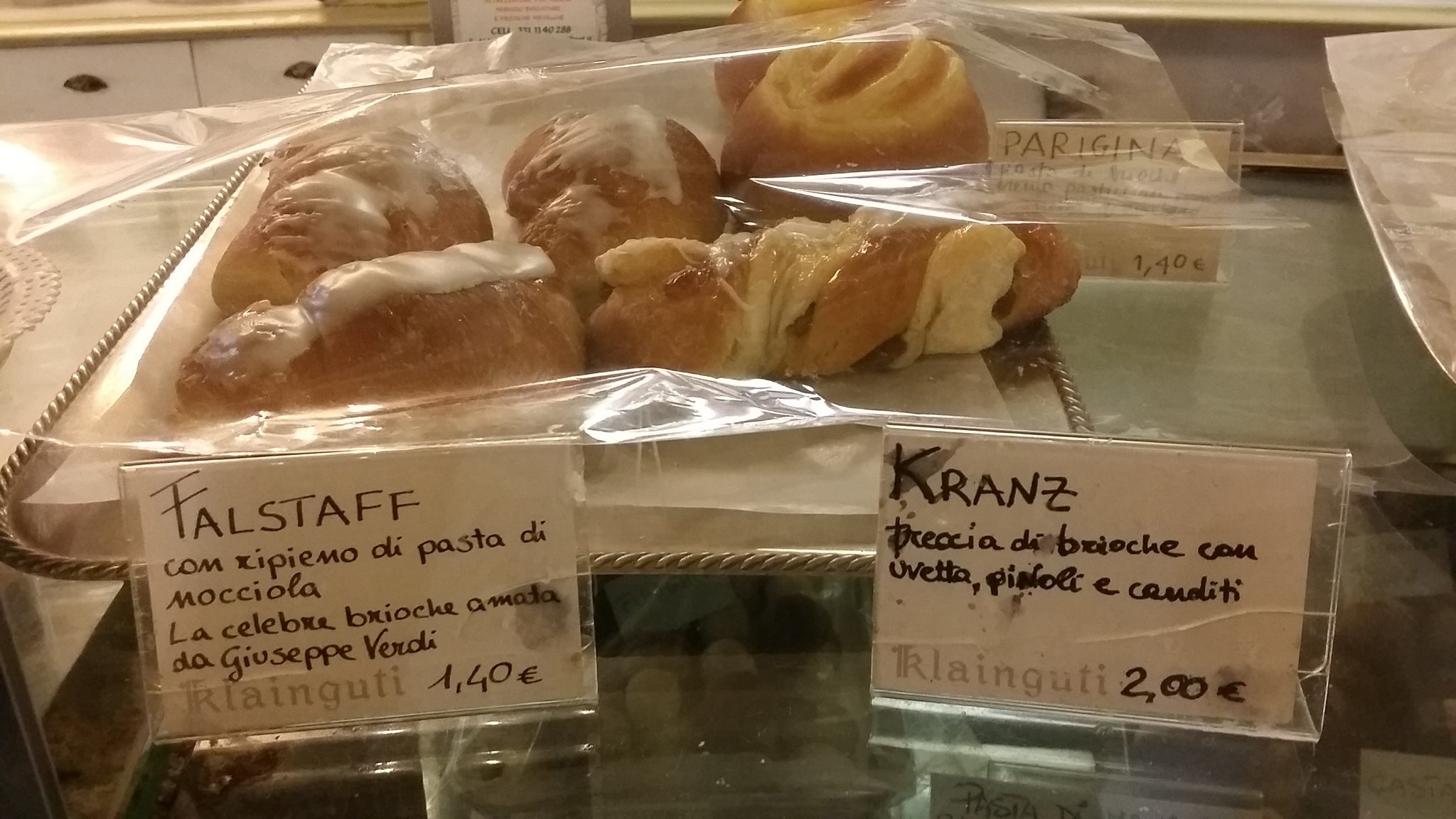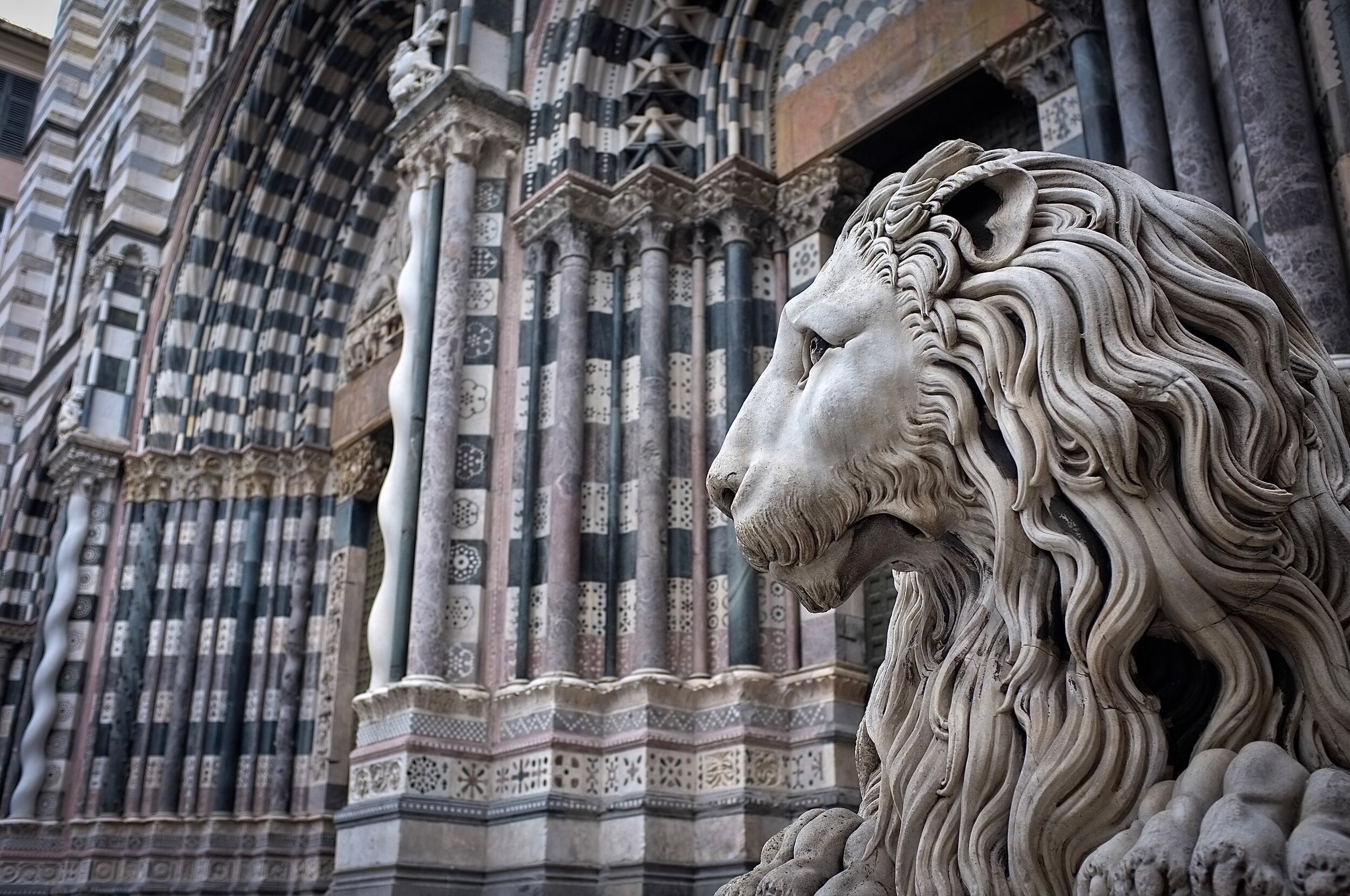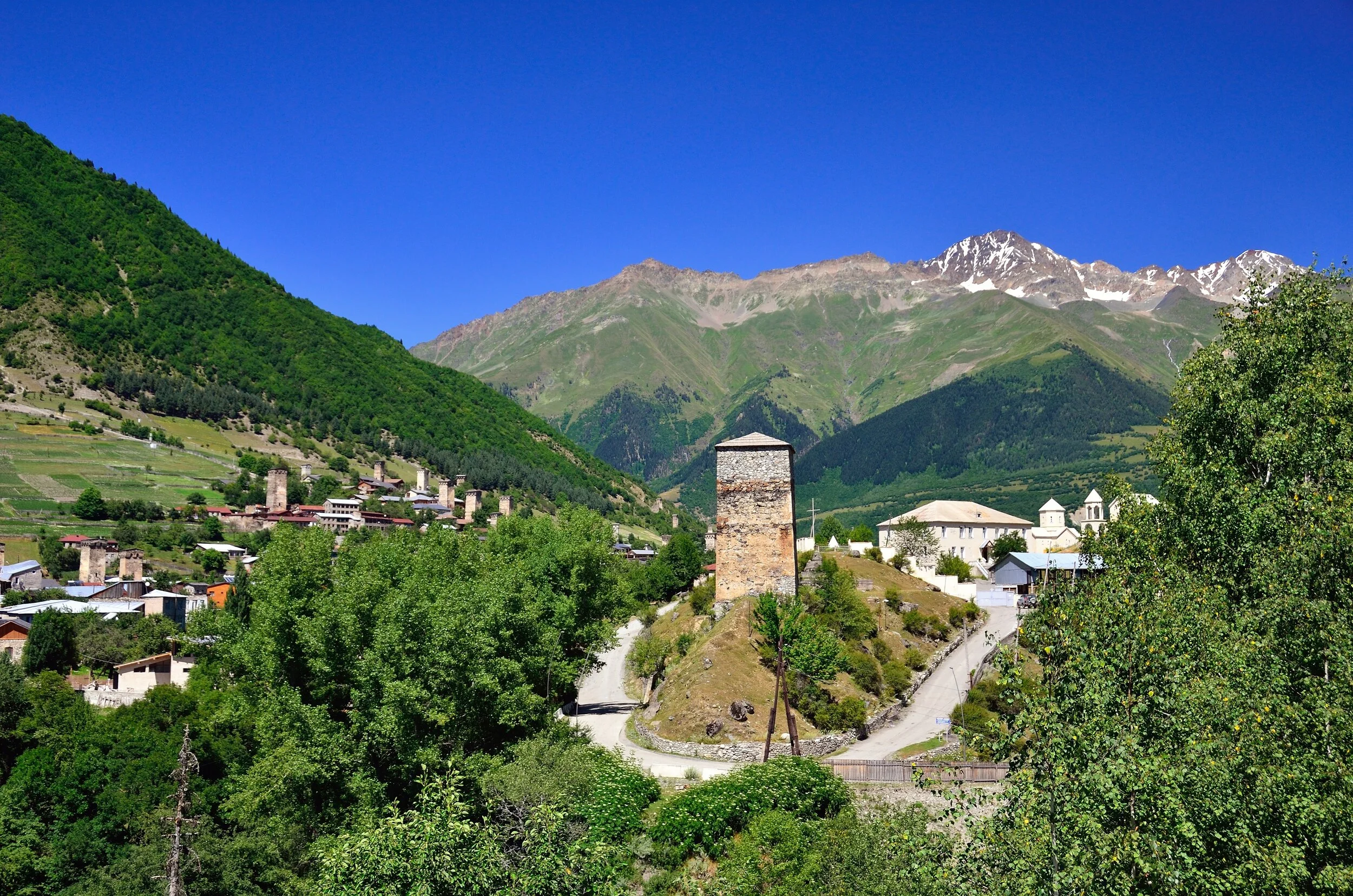MY FIRST PORT OF CALL
BIG WEEKEND: GENOA
The Sunday Times, 2016
SATURDAY
What does anyone really want from an Italian city break? Culture, history, good looks, great food, maybe some sun if it’s in the mood – right? Well, there’s a city in the northwest of the country that has all of that and more. But it’s also missing the thing no one wants: crowds.
Largely passed over in favour of Rome, Milan, Florence and Venice, cities that are rammed to the point of infestation during high season, Genoa – Italy’s busiest port and nicknamed, with fond irony, “La Superba” by its sons and daughters – is the work of art you don’t have to queue to see.
You may have to queue to eat well, however, so prepare to join a drooling mob outside the Panificio e Grissineria Claretta, on Via Posta Vecchia. Your breakfast of salt-spangled focaccia dipped in cappuccino will keep you going as you get lost in Genoa’s very old town, the largest medieval centre in Europe.
The elaborate weave of its narrow streets and passageways, called caruggi, are lined with five- and six-storey buildings that lean into each other, almost kissing at their summits and putting the squeeze on sunlight. One-time resident Charles Dickens described the shadow-steeped district as a “beautiful confusion”. And he was right on both counts.
Ask its opinion about anything, and Genoa will tell you this: that it is proud to be a living, breathing, working city — it is not a museum. It’s just that parts of it have been working the same way for hundreds of years. Its caruggi – and the courtyard-sized piazzas to which they wind – are home to around a dozen independent, artisanal stores that started trading long before use of the word “artisanal” became epidemic. For a taste of that distant past, treat yourself to pralines from Klainguti (since 1828; Piazza di Soziglia) or candied loquats from Pietro Romanengo fu Stefano (established 1780; Via Roma).
Which might put you in the mood for lunch. For a Genoese invention, in fact: pesto. Il Genovese, a trattoria just off XX Septiembre, the main shopping drag, serves a version of it that’s so good you’ll suspect its ingredients – Genoese basil, Ligurian extra virgin olive oil, Vessalico garlic, Italian pine nuts, Pecorino and Parmesan cheeses, and Sicilian salt, in unmeasured quantities – of plotting to enslave your tastebuds. But, then, its chef-owner, Roberto Panizza, bleeds green: he runs the Pesto World Championship, makes at least a kilo of the sauce a day and wields a pestle the size and weight of a mazza. Keep the drips to a minimum with a highly absorbent pasta. Trofie twists and testaroli “pancakes” were made for it (yes, literally).
Now that your appetite for earthly pleasures has been sated, it’s time to get spiritual. But don’t be alarmed – sometimes in Italy, the line between the carnal and the divine is beguilingly fuzzy, and judging by the humbug-striped marble-and-slate facade, fanciful carvings and doe-eyed guardian lions of the Cathedral of San Lorenzo, Genoa’s god is an understanding sort.
Built in the 12th century, the cathedral is a repository of mid-division Renaissance art – the best of it being the Luca Cambiaso frescoes and a martyrdom of San Lorenzo by Lazzaro Tavarone – but in the Museo del Tesoro, in its crypt, there is some seriously fabled stuff, worth a carnival barker. Step right up and see the chalcedony platter on which the severed head of John the Baptist was served to Salome; a Byzantine gold crucifix that holds fragments of the True Cross of Our Lord Jesus Christ; and a candidate for the Holy Grail, a green glass vessel given by Solomon to the Queen of Sheba and used at the Last Supper. Argue with their provenance all you like, but don’t do it out loud.
––––––––––––––––––––––––
Genoa has been a major player on the world stage since the end of the first millennium, when it became an independent city-state and maritime superpower to rival Venice and Sicily. Its recent fortunes have seen more downs than ups, though, and nowhere has that drama been played out more explicitly than at the Porto Antico. When Renzo Piano, a local boy who designed the Pompidou Centre, began its modernisation in 1992 – for an Expo whose theme was the explorer and fellow Genoese Christopher Colombus – the old harbour area had been rife with crime and prostitution for decades. Its facelift has brought in tourists, but it has done little for the poetry of the place. Where once sea mists mingled with the ghosts of corsairs, now Moroccan barrow boys push knock-off Louis Vuitton on anyone who comes within ten yards of them.
Still, with Piano’s revampment came the highly rated Aquarium, the second largest in Europe, where the strictly adorable West Indian manatee is happy enough to breed.
Unfortunately, one of the best views of the 250ft Lanterna lighthouse – the city’s emblem, built in 1544 – can be had from the rigging of The Neptune, a replica of a 17th-century galleon moored nearby, which has the dubious distinction of being the best thing in Roman Polanksi’s worst film, Pirates.
Become an extra in the handheld movie of everyday Genoa and plonk yourself down at one of the perma-slopped parasol’d tables in the Piazza delle Erbe, the nerve centre of lower-end Genoese nightlife. You’ll soon be waving away weed-dealers and busking mandoliers as though you went to school with them. Find a Bar Berto waiter to take your aperitivo order, which should include a Punt e Mes dark vermouth on the rocks and some nibbles, preferably cured meats, burrata balls and cardoon fritters.
Remember that you’re a cultured guest and hoist your brow at the Teatro Carlo Felice, an opera house with a state-of-the-art auditorium tucked inside a neoclassical shell. It puts on symphonic works, chamber concerts and ballets as well as the greatest hits of Puccini, Rossini and Leoncavallo. If your luck’s in, you’ll catch Verdi’s Falstaff, and during the intermission get to gorge on the pastry that Klainguti, his favourite confectioners, named after it (the composer complained that the iced brioche filled with hazelnut paste went down better than his opera).
Return to the harbour for a late dinner at Antica Osteria di Vico Palla. Maurizio Capurro is the high priest at this temple to Ligurian cuisine, and everything he does here is the answer to the question, what’s so special about it? Every dish on the blackboard menu is a headline act, but your stomach will thank you most profusely for the buridda cuttlefish and shrimp stew; brandacujùn, a mash of dried stockfish, oil, lemon, potatoes and hardboiled eggs that takes the latter two syllables of its name from the Ligurian dialect word for testicles; and pansôti, pasta pockets stuffed with chard and prebôggion herbs such as borage, lovage and chervil that grow wild outside the city.
Follow the strains of live jazz to the Bottega del Conte, on Via Delle Grazie, a five-minute walk away (drinks from £2). With more character than an Eli Wallach lookalike contest, the three-storey cafe bar has restored its 11th century cellars and retained a few fittings from its former life as a grocery – a marble counter and meat hooks in the ceiling – and its thousand nooks and forgiving lighting draw the nightcap brigade in their hundreds.






SUNDAY
Pick a postcard, any postcard. “Sheltered by the Apennine mountains, lapped by the Ligurian Sea and draped in scarlet bougainvillea, Genoa occupies an enviable position on the Italian riviera.” Yes, I know, but it really does though. If you fancy a taste of the Côte d’Azur without having to turn out your pockets, it’s a short drive west to the Riviera di Ponente; or if craggy drama’s your thing – and by “craggy drama” I mean eastbound roads that punch through mountains and descend to fishing villages with an urgent grace – there’s the Riviera di Levante. And if you’d rather not hire a car, you can’t move for trains in Liguria; they get everywhere, hugging the coast and hogging the views, as far as the port of La Spezia.
In the time that you have, see what I mean by catching one of those trains to Camogli, which is a 20-minute ride from Brignole station (£4.50 return). Sleepier and cheaper than nearby Portofino, the harbour town nonetheless has a decided if considered glamour. The only parts of it that aren’t decked out in hot pastels with electric-green shutters are its churches and diminutive castle. Like the villages of the Cinque Terre national park a half-hour drive away, Camogli is linked to its closest neighbours by hiking trails. With Apollo butterflies floating about your knees, take the clearly marked La Ruta footpath through thyme-scented olive groves for a peerless prospect of the Gulf of Tigullio. Liguria is a maritime region, its history wedded to the sea, so brunch like a jacktar on anchovy soup and ship’s biscuits at the Cucina di Nonna Nina in San Rocco.
Genoa’s backyard is also a place of literary pilgrimage. Hemingway, Max Beerbohm, WB Yeats and Ezra Pound all found a more than serviceable muse in the resort of Rapallo, two stops on from Camogli. Illustrious company for sure, but true romance awaits the bookish at the Gulf of Poets, a sheltered bay close to the Tuscan border. Percy Bysshe Shelley lived with his wife Mary, the author of Frankenstein, on one side of it, near Lerici, and Lord Byron lived on the other, in Porto Venere. Byron regularly swam to visit his friend, but Shelley’s relationship with water was more troubled – he drowned after his boat, the Don Juan, foundered in a violent squall. The poet’s body washed ashore in Viareggio, a few miles from his home, and it was cremated on the beach there in keeping with quarantine regulations (Edward John Trelawny, an associate of the poets who forged a career out of basking in their reflected glory, presented the cremation as a pagan ceremony in which he’d snatched Shelley’s heart from the pyre).
––––––––––––––––––––––––
Back in town, take yourself for an early passeggiata along the Strade Nuove, the “new streets” on which the city’s aristocratic families (the Spinolas, Grimaldis and Centuriones) built the wildly opulent Palazzi dei Rolli – mansions that were considered fit to host state visits – between the 16th and 17th centuries. Forty-two of these noble abodes, which sit sniffily above the caruggi, their lintels raised, are UNESCO World Heritage Sites, and three of the finest, the lavishly frescoed and much gilded Palazzi Bianco, Rosso and Tursi, on Via Garibaldi, now comprise the Musei of Strada Nuova, and between them they house the world’s largest collection of Ligurian and Genoese paintings.
The Bianco’s line-up of old masters is especially impressive – hello Caravaggio, Van Dyck and Rubens – but Alessandro Magnasco is the star here, albeit a dark one that emits more shadow than light. A Genoese painter of the late-Baroque, Magnasco’s tortuous depictions of raddled monks, dissolute actors and Gypsy beggars have more in common with the work of expressionist artists 300 years his junior – Munch, Schiele and Chaim Soutine – than with pedlars of cheap rococo effects. Goya and Edward Burra cited him as an influence.
Tursi, which also serves as city hall, contains Il Cannone, which was the favourite instrument of the virtuoso violinist and “first rock star” Niccolò Paganini. An armed guard and a multimillion-pound insurance policy follow the fiddle whenever it’s allowed out, so to see it at rest in its climate-controlled vitrine, its spruce and maple carcass simply drawing music towards to it, is a singular pleasure.
New countries take a while to settle down politically, and some would say that Italy – in its present form, not quite 150 years old – is still teething. One of the godfathers of the Risorgimento, the movement that brought about the unification of a free, independent and republican Italy, was Genoese. Pay your respects to that man, Giuseppe Mazzini, at the Museo del Risorgimento, his former home, on Via Lomellini. With 14 rooms displaying the flags, weapons, uniforms, paintings and photographs of nationalist firebrands, the museum covers 120 years of revolutionary history, from Balilla, the Genoese boy who in throwing a stone at an Austrian soldier during the War of the Austrian Succession became a symbol of the struggle for Italian solidarity, to the against-all-odds conquest of Sicily and Naples, and so much of southern Italy, by Garibaldi and a volunteer force of a few thousand redshirts – aged between 11 and 69 – in 1860.
The Risorgimento was the realisation of the Italian dream for a great many people, and the museum celebrates it, but factionalism countries to dog the nation’s politics. The Northern League party, which governed in coalition with Silvio Berlusconi, has advocated the secession of northern Italy (which it calls Pandania). Dismissing the south as corrupt, work-shy and mercenary, the League maintains that Garibaldi did not unite Italy – he divided Africa. And it is not alone in stoking secessionist fires – Sardinia, Sicily and Venice continue to inspire their own separatist movements.
––––––––––––––––––––––––
One’s faith in humanity is easily shaken when politics grabs the microphone, so take some time out with nature that isn’t human on a four-hour Whalewatch Genova cruise around the Pelagos Sanctuary for Mediterranean Marine Mammals. This protected area, which stretches from Sardinia to the Côte d’Azur, is unusually rich in wildlife. Scan the swell for whale four ways — Cuvier’s beaked, long-finned pilot, fin and sperm — and three species of dolphin, and if no cetacean shows you’re entitled to another trip. The embarkation point for the cruises is near the coastguard boats at the Porto Antico.
To watch the light expire over the city you’ve made your own, catch the funicular from Largo della Zecca to Righi. From there it’s no distance to Forte Castellaccio, one of the several military strongholds built between the 13th and 18th centuries on the hills above Genoa, and the Specola Tower, where enemies of the state were hanged. Find yourself a scenic spot – an easy job here – open a half-bottle of Piedmont red and watch all your cares scatter slowly over the ramparts.
Dinner is served down an invitingly dingy alley near the foot of the cable car. Da Gaia takes a “slow food” approach to Ligurian dishes, such as stewed rabbit and pasqualina leek and ricotta pies, with dependably delicious if occasionally stodgy results.
See that your last night goes with a pop at Bar Degli Asinelli, an old-town haunt of great vintage. “Haunt” is the right word, too, as its air of unpredictability and voluble patrons – a demi-monde of resting actors, brushless artists, beached sailors and defrocked priests – will take you back to a time of genuine bohemianism long before smartphones turned conversation into a lost art. Cheap rosso, bianco and rosato flow freely, but the bar’s specialty is Asinello, or “Donkey”, a white wine flavoured with 16 herbs, among them gentian root, cinchona bark and wormwood. It comes with a slice of lemon – deal with it.







WHERE TO STAY
The Melia Genova is an elegant 1920s hotel with a pool, gym and Turkish bath, five minutes from the caruggi (doubles from £155). The Quartopiano is an old-town B&B with a hot tub on its rooftop terrace (doubles from £70).
Joseph Furey was a guest of Genoa Tourism, the Melia Genova and Ryanair, which flies to Genoa from £60 return.




